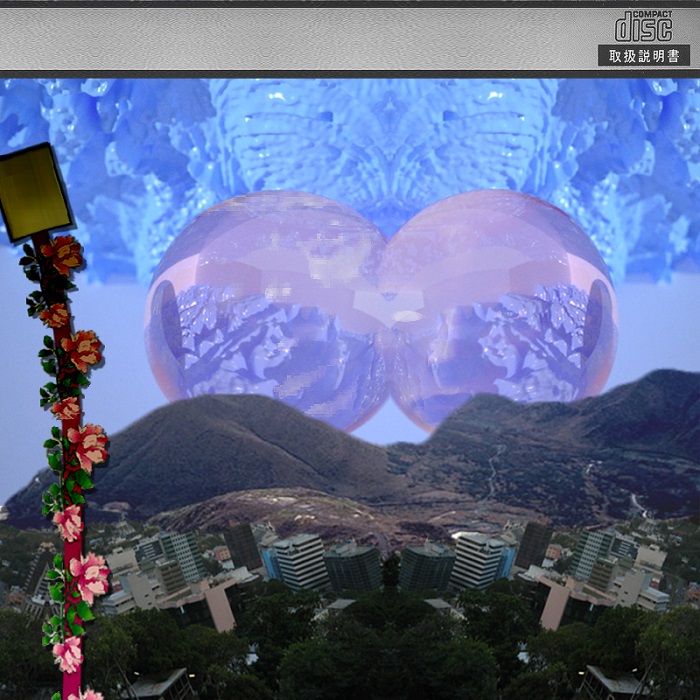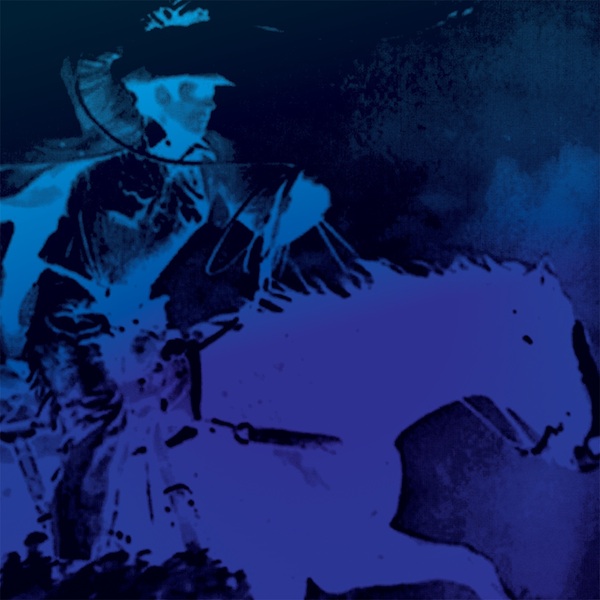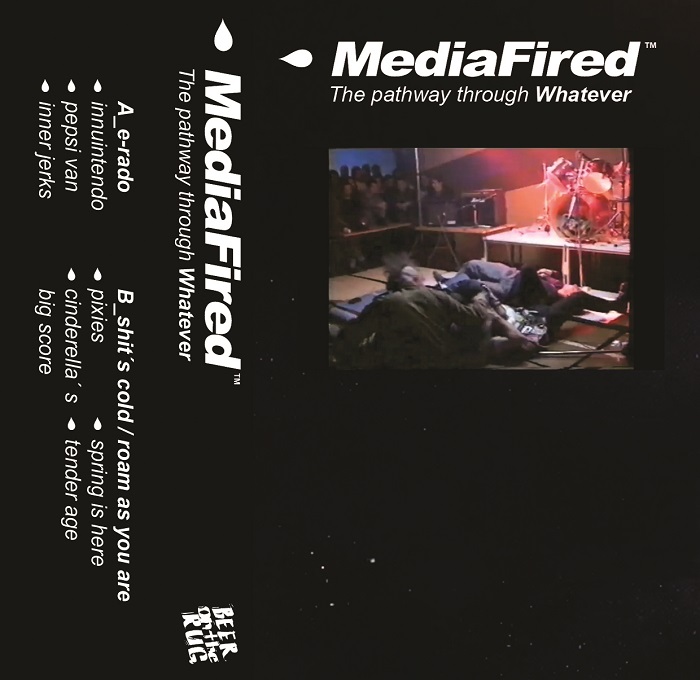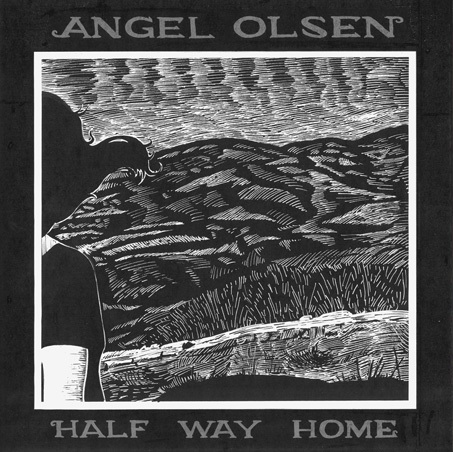We celebrate the end of the year the only way we know how: through lists, essays, and mixes. Join us as we explore the music and films that helped define the year. More from this series
30. Dolphins Into The Future
Canto Arquipélago
[Underwater Peoples]

Abandoning the turbulent nurturing of modern societies, Dolphins Into The Future’s Lieven Martens went to the Azores islands on a quest to find an arche, an ultimate substance and essence related to all things — and he probably found it in the primordial form of waves: mechanical (acoustic, oceanic), electromagnetic (light, radiation), mathematical (sinusoids, tones). Canto Arquipélago, like a wave, presented patterns of repetition and interference that absorbed the environment and reflected it back, in a way that the artificial (music) was not opposed to the natural (field recordings) but was embedded within it. Emerging from the gap between these categories, there were the oscillations of natural cycles confronted to traces of proto-languages (dolphin whistles, talking percussion, bird chirping, clusters of analog bubbling), and the bulk movement of wind and rain added to the arpeggiated and sweeping synths configuring primeval information networks, dismissing in the process any exoticist representation. Instead of a trance-like, out-of-body experience with new-spirituality pretensions, the whole trip was inundated with a pensive feeling of mundanity — the sublunary becoming all-too-earthly. Canto Arquipélago did not gaze at the heavens waiting for divine redemption, but melancholically stared at its terrene surroundings in humble contemplation.
29. 情報デスクVIRTUAL
札幌コンテンポラリー
[Beer On The Rug]

Taking its samples and inspirations from music that can often be found in places such as news channel intros, infomercials, and hotel lobbies, 札幌コンテンポラリー by 情報デスクVIRTUAL (a.k.a. New Dreams Ltd., Macintosh Plus, Laserdisc Visions, etc.) was one of 2012’s most challenging entries in the already perplexing genre of vaporwave. By foregrounding corporate sounds in an almost unadulterated format, the listener was confronted with the deconstruction of kitsch, a removal of the safe distance that ironic detachment once provided. During its 25 tracks (27 in a subsequent bonus release), 札幌コンテンポラリー demanded that you stop and listen to the unlistenable, music so ostracized that it became impossible to not thoroughly reflect on its very structure. Are we faced with a sonorous exposé of late capitalism, bringing its invisible sounds to the foreground, forcing us to pay attention to the never-ending muzak that make up the soundtrack of our consumerist lives? However you may choose to answer this question, 札幌コンテンポラリー was the perfect soundtrack to a certain Don Delillo quote: “He watched Broadway float into the curved window and felt as if blocks of time and space had come loose and drifted. The misplaced heartland hotel. The signs for Mita, Midori, Kirin, Magno, Suntory — words that were part of some synthetic mass language, the Esperanto of jet lag.”
28. Tim Hecker / Daniel Lopatin
Instrumental Tourist
[Software]

You can’t entirely prepare for a collaborative improvisation. Sure, you can make patches or conceive of a tonal pool you might end up using during the session, and you can nail down some certainties by only bringing specific instruments. But the operative element of any good improvisation is what shined through on Instrumental Tourist: it unleashed Tim Hecker’s and Daniel Lopatin’s creativity from the restraints of their usually dense compositional process, leaving only the tethers of instinct and taste to decide where their work went. This freedom led to the intense, freewheeling bursts of energy found in Hecker’s massive collisions of musical data, as well as a calm wander through the nuances of texture heard in Lopatin’s deep pads and delay-laden samples. Instrumental Tourist epitomized the process of investigating the moment and imbuing it with sound according to the audition of the preceding moment, serving as a document of the free-play meeting of great musical minds. It was a game of Go, a conversation of musical impetus. For all the freedom and uncertainty on Instrumental Tourist, it achieved a remarkable coherence, rivaling even the most exhaustively composed works of 2012.
27. White Suns
Sinews
[Load]

Dear White Suns, I’m desperate and I need your help. See, the [HARDCORE] I was leasing just to get to work every day just broke down. I just can’t afford to get it fixed. But I also really can’t afford to miss work right now, because the aging [PUNK ROCK] that I take care of is really sick and can’t get its medication. I am supposed to be a provider. The thought of it just makes me sick. Also, the [HEAVY METAL] I was planning on using for retirement was lost in the recent super-storm. It’s all gone! Just like that. Just a smoking pile of rubble and ashes! I don’t mean to complain or anything, but is this what faith and hope in [CLASSIC ROCK] are worth!? And that’s not even the worst of it. See, my first-born [DRONE] just got drafted in an unwinnable war that, in one way or another, I just know will end up claiming his life. Everything just seems broken. It’s all coming apart. I don’t hear music anymore, just a terrible, inevitable sound. What kind of [NOISE] is this, White Suns? So fucking ceaseless. So fucking mangled. So fucking loud.
26. Sun Araw & M. Geddes Gengras Meet The Congos
FRKWYS Vol. 9: Icon Give Thank
[RVNG Intl.]
![]()
A definite minority of humans personally identify with the Rastafari movement, but that didn’t prevent anyone from basking in the psychedelic and rhythmic synergy emanating from Icon Give Thank, the superb collaboration between the dub-inspired Sun Araw, producer M. Geddes Gengras, and legendary reggae outfit The Congos. Do you have a distinct idea of what constitutes the “court of the king”? Does the name Haile Selassie hold a special significance for you? It’s almost irrelevant, because similar philosophies (musical and otherwise) brought all of the individuals involved in this recording together for an album, crafted primarily in St. Catherine, Jamaica, which appealed across generations and regardless of whether or not your image of Zion comes mostly from The Matrix. Sun Araw’s modern take on dub music offered a fresh complement to The Congos’ delayed and nostalgia-inducing vocals, and this was particularly evident on “Happy Song,” where the driving bass line, a common quality of the former’s solo work, presented an amazing contrast with Cedric Myton’s memorable falsetto. A line in the song also works as an accurate commentary on the entire album: “Let us play the music. Let us sing the song. Let us dance and play. Music all night long.” I think we can all get behind that.
25. Mediafired
The Pathway Through Whatever
[Beer On The Rug]

In David Foster Wallace’s Infinite Jest, a character dreams of addiction personified as Death with a big, yellow “Have a Nice Day” smiley face. That image stuck with me as vaporwave developed throughout 2012; the music was chintzy to the point of surrealism, but with an unsettling subliminal darkness. Sidestepping that, Mediafired’s gorgeous album felt optimistic in its hypnotic eccojams. “Pixies,” the centerpiece to The Pathway Through Whatever’s hyperreality, turned Kate Bush’s “Wuthering Heights” into the most blissful broken record I’ve ever heard. Surrounding that, Mediafired passionately worked from the hazy, looping blueprint of Daniel Lopatin’s Chuck Person project, creating glitzy vignettes from warping The Who to the closing pair of fractured takes on The Backstreet Boys’ “I Want It That Way,” which first bloomed into the pulsing “Spring Is Here” and then stretched and melted like a lava lamp into a pitch-shifted choir on “Tender Age.” Lopatin first described the looped vocal fragments of eccojams as something spiritual and poetic to him, but he also hoped the practice could become more sophisticated. On that merit and more, The Pathway Through Whatever succeeded and became one of the most blissful mindfucks of the year.
24. Graham Lambkin
Amateur Doubles
[Kye]

Technically released last year but too late in the year to make our 2011 list, Amateur Doubles was a testament to the versatility of listener interpretation. As suggested by the album’s liner notes (“Recorded 2010-2011 in a Honda Civic”) and gatefold (a sun-kissed photo of Graham Lambkin sitting in said vehicle with his family, his veiled gaze directed towards an obscured car stereo, two CD cases lying on the dashboard), the album was ostensibly recorded on the road. But regardless of whether it was read as a meticulously deliberate fabrication or as an authentic artifact, the recording’s seemingly indeterminate happenings remained an alluring evocation of automotive experience. Driven by Lambkin’s erratic audition of two otherworldly Pôle Records albums, the Civic’s womblike acoustics were supplemented by ambience of both interior and exterior genesis. Scattered throughout the cut-up tape, we heard the car’s ignition, its doors opening and closing, muffled speech and soothing whir, Doppler-effected horns and objects whizzing by. To listen to Amateur Doubles was to listen to the listening of music: the record blurred the line between recorded and not-yet-recorded sound, between Lambkin’s status as esoteric DJ and as field recorder, but in the process it cemented his reputation as sound poet.
23. Angel Olsen
Half Way Home
[Bathetic]

In a recent radio interview, Angel Olsen described the process of finding her voice as similar to how an actress, without ever seeing her own face, learns to control her expressions in order to convey what a given scene asks of her. Listening to Half Way Home, Olsen’s understatedly acrobatic voice nimbly elevated her collection of simple folks songs to a place that, when encountered, sent a shiver down your spine. Her delicate falsetto morphed into a caterwaul as easy as it receded into a whisper. Without a lot of modern vocal peers, it made sense to compare Olsen’s performance on the record to that of a great actress who both embodied a role and defined it as a part that only she could play. Even if you didn’t speak a word of English, Olsen’s voice would still convey the meaning behind her ambitiously sparse material, at once stoic and vulnerable, light and heavy.
22. Demdike Stare
Elemental
[Modern Love]

No one explored the possibilities of disembodied sound this year better than Demdike Stare. Across Elemental’s nearly two hours of expertly stitched-together dub techno — for lack of a more apt genre tag — samples were taken out of context, rendered unidentifiable individually, but given a coherent, recognizable identity through collaboration. Like 2011’s superlative Tryptych, Elemental thrived on its powerful mood-induction. But while last year’s mammoth collection dealt in deeply claustrophobic atmospheres, Elemental’s sounds occupied less confining environments. Given greater space to breathe, those sounds gained the power to question the forces at work behind their nigh-cinematic evocations. These tracks were palpably nightmarish, provoking subconscious physical reactions and campily demanding at least a little bit of rudimentary psychoanalysis: Just why was this stuff so powerfully associative? And then the questions kept coming: Why did the drumming in “Erosion of Mediocrity” do “apocalyptic” better than anybody else, in a year where apocalyptic was simultaneously ubiquitous and easy? Why did the title of “We Have Already Died” give the track’s paradoxically organic-sounding techno groove such a funny and unsettling edge? But most importantly: When could we hear more?
21. Aaron Dilloway
Modern Jester
[Hanson]

Former Wolf Eyes member Aaron Dilloway spent years on his magnum opus, Modern Jester, a painstaking project that produced some of the most intricate and musically aesthetic noise to ever be pressed onto vinyl. And not unlike his peers John Wiese and C. Spencer Yeh, Dilloway comfortably explored the sonic dynamic ranges of gritty drones and oscillating static swells set beyond the noise traditionalism of unwavering harshness. Modern Jester then played a significant role in returning a once experimental genre back toward its exploratory roots, defying our expectations of what it is that noise does, can do, and, of course, will destructively undo.
We celebrate the end of the year the only way we know how: through lists, essays, and mixes. Join us as we explore the music and films that helped define the year. More from this series
